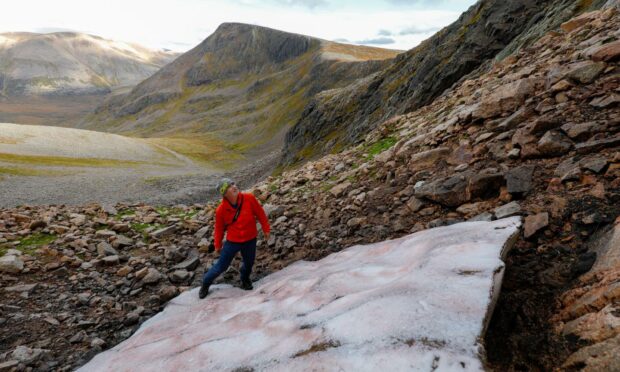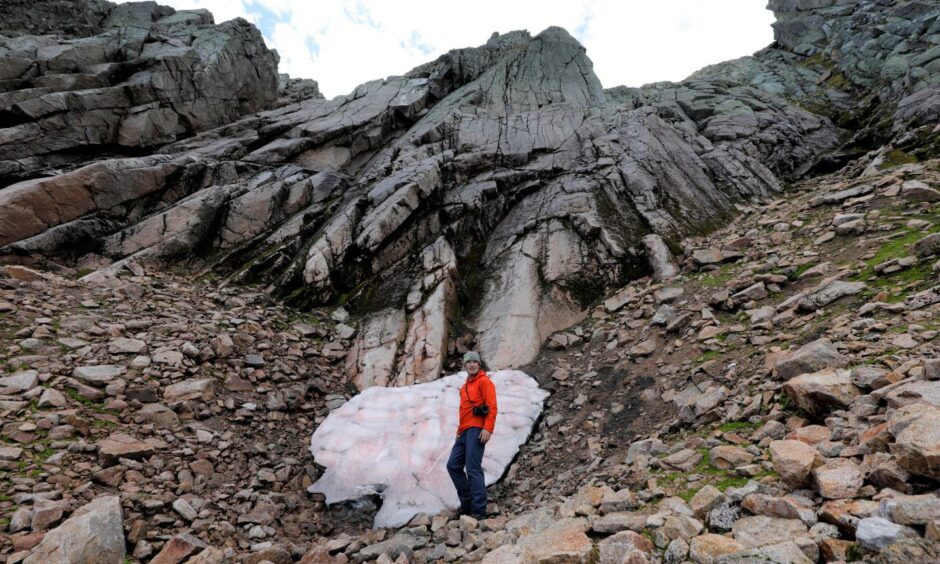Scotland’s most famous snow patch has melted – for only the eighth time in 300 years.
The snow patch – known as the Sphinx – dates back hundreds of years.
It is the UK’s oldest patch of “permanent” snow, found along the lip of the ridge of Braeriach – the UK’s third-highest mountain – in an isolated part of the Cairngorms.
It lies in a hollow under the mountain’s ridge, meaning it gets very little sunlight.
There are a number of such patches across Scotland, mostly on Ben Nevis and in the Cairngorms.
Some have been known to melt fairly frequently. The Sphinx however is the most famous of them all, having melted just seven times in the last 300 years.
According to records, the Sphinx previously melted fully in 1933, 1959, 1996, 2003, 2006, 2017, and 2018.
Before 1933, it is thought to have last melted completely in the 1700s.
The Sphinx had shrunk to the size of an A4 piece of paper last month, leaving experts worried it would fully melt in the mild weather.
Against the odds, the Sphinx patch at Garbh Choire Mòr clung on by its fingertips to be buried by the new snow last week. However, it’s now smaller than an A4 sheet of paper, as excavated today by Colin Hutt. It’ll melt in the next 48 hours in very mild conditions. pic.twitter.com/GO6rDSuhHs
— Iain Cameron (@theiaincameron) October 25, 2021
Rising temperatures may have caused the Sphinx to melt
Iain Cameron, Scotland’s leading snow patch expert, believes that climate change is the cause.
He said: “It was thought never to melt, or at least very infrequently,” he said. “But this will be the third time in five years which is unprecedented.
“I’m not a climatologist but I think it’s a safe assumption to say that rising temperatures are what is ultimately behind this.”
This comes as world leaders and delegates from 196 countries meet in Glasgow to attend COP26.
It officially commenced on November 1 and the summit will aim to tackle rising global temperatures and other goals set out in the Paris Agreement.
COP26 is being billed as humanity’s “last best chance” to save our planet from ecological catastrophe.
Right now, the planet is 1.1C hotter than it was between 1850 and 1900, causing melting ice-caps, rising sea levels, more severe weather events and all the consequences on our lives that stem from those.

